Super Shoes Aren’t Just for Elite Runners — How Running Brands Are Bringing These Tech-Loaded Styles to the Masses

Super shoes were made to break records.
While these carbon-plated styles, which are paired with supercritical foam midsoles, landed on the scene almost a decade ago, the definitive tipping point came in 2019. That’s when Eliud Kipchoge, wearing the Nike Air Zoom Alphafly Next%, became the first person to run a marathon distance in less than two hours.
More from Footwear News
Five years later, at a time when market watchers bemoan the lack of overall innovation in sneakers, the super shoe phenomenon is igniting the industry. And every major athletic player wants a piece of the action.
“There has been a distinct shift in the running footwear industry over the past few years, which has led to a ‘super shoe race’ among running brands,” said Patrick Nava, vice president of product, running and credibility sports at Adidas. “The super shoe is no longer a new concept, it is embedded in the sport now and has clearly changed the face of elite sports forever, with distance records falling every year.”
Last year alone, the late Kelvin Kiptum — while wearing the Nike Alphafly 3 — broke the men’s marathon record at the Chicago Marathon with a time of 2:00:35. (The 24-year-old died in a car crash in February.) And at the Berlin Marathon, Tigist Assefa broke the women’s world record with a time of 2:11:53 while in the Adidas Adizero Adios Pro Evo 1.
These blockbuster performances are catching the attention of running-obsessed consumers of all levels — who aspire to break their own records and are willing to pay high prices for shoes that will help them achieve their goals.
For instance, last year, when Hellen Obiri became the first woman since 1989 to win both the Boston and the New York City marathons in the same year, her On sneakers became highly sought-after.
“Once she was seen in one of On’s super shoes, everyone wanted to know when they could buy them,” said Jonas Hasch, On’s footwear development lead. The brand’s latest super shoe, the On Cloudboom Echo 3, retails for $290.
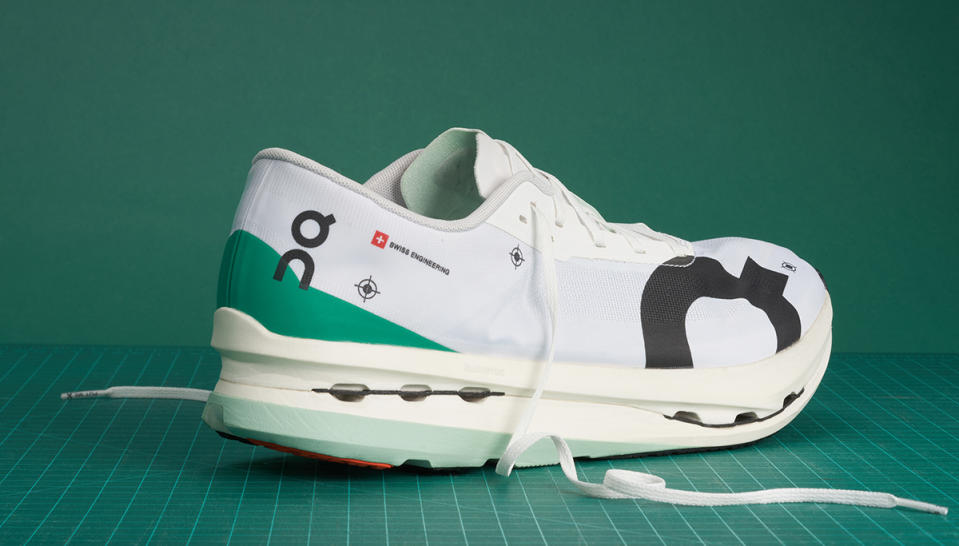
Although super shoes have been designed for elite runners, they have recently permeated the broader running community at a rapid pace.
“There’s an important distinction between muse and consumer. Our elite athletes don’t buy shoes, so, by definition, they’re not consumers. But they inspire product briefs and they validate where we’re going with super shoes,” said Nike senior footwear director Bret Schoolmeester. “What’s exciting is, if you went to the New York City or L.A. Marathon in 2016 or 2017, you would see [super] shoes for the first 50 or 100 runners. Seven or eight years later, you see super shoes all the way through the pack.”
Kevin Fitzpatrick, global vice president of running at New Balance, described today’s super shoe consumer as “multifaceted.”
“We’re innovating at a quick pace, and that is because of the elite athlete. They’re driving the rapid pace of innovation,” said Fitzpatrick. “But super shoe innovation is starting to go to much broader audiences. The audience is huge. It’s much bigger than we all expected, so we’re learning in real time how to adapt these things to make them more meaningful and beneficial to somebody running a sub-four-hour marathon.”
Why Storytelling Matters
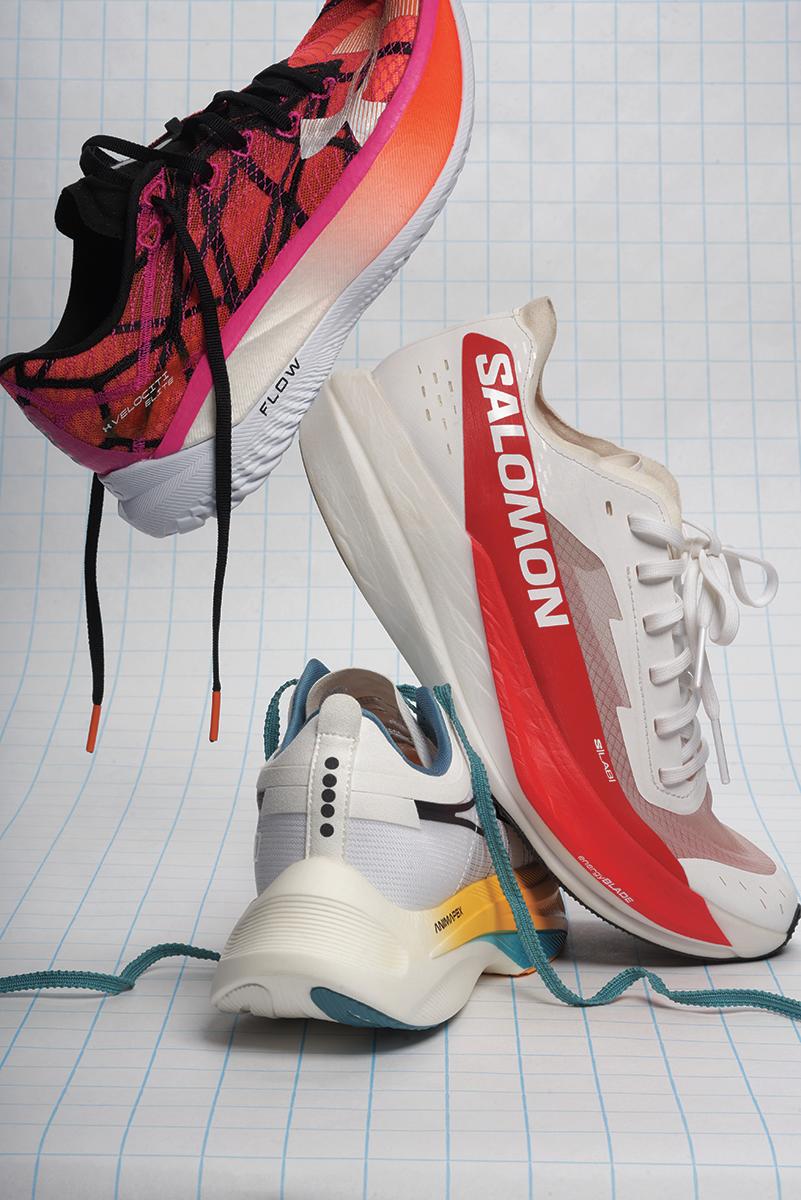
The heat around super shoes has caused other segments of the market to use the concept and language to sell products of their own.
For instance, Oboz introduced the Katabatic Wind at the start of March, a boot created for fastpackers and speed hikers using what it billed as “super shoe technology.” The style is built with Oboz’s Inertia of Motion Carbon System, which consists of a forked carbon-fiber plate, dual-layer ACT Nitro midsoles and an enhanced rocker profile.
The popularity of the term does muddy the waters for marketers — and communicating the benefits of super shoes is already complicated enough.
“It’s hard because the message is so deeply runner nerd and scientific that it gets contrived. The message is borderline inaccessible,” said Lee Sackett, footwear product line manager at Brooks. “I’ve been trying to perfect the two-sentence read on, but the point of the super shoe is to be metabolically advantageous for the wearer. All that mumbo jumbo aside, all that means is a super shoe should make running a certain distance at a certain pace easier. Who doesn’t want the run to be easier?”
These messaging struggles aren’t just felt by running industry giants. It is especially challenging for brands that are just entering the category.
For example, Tyr Sport made its super shoe debut in February with the release of the Valkyrie Elite Carbon. Chief executive officer Matt DiLorenzo explained that communication with consumers and industry insiders alike has remained the brand’s top priority.
“Industry outreach is essential. This involves effective communication through marketing campaigns, trade shows and collaborations,” said DiLorenzo. “By consistently reinforcing [our super shoe] message, we can establish a strong presence and capture the attention of both seasoned runners and newcomers.”
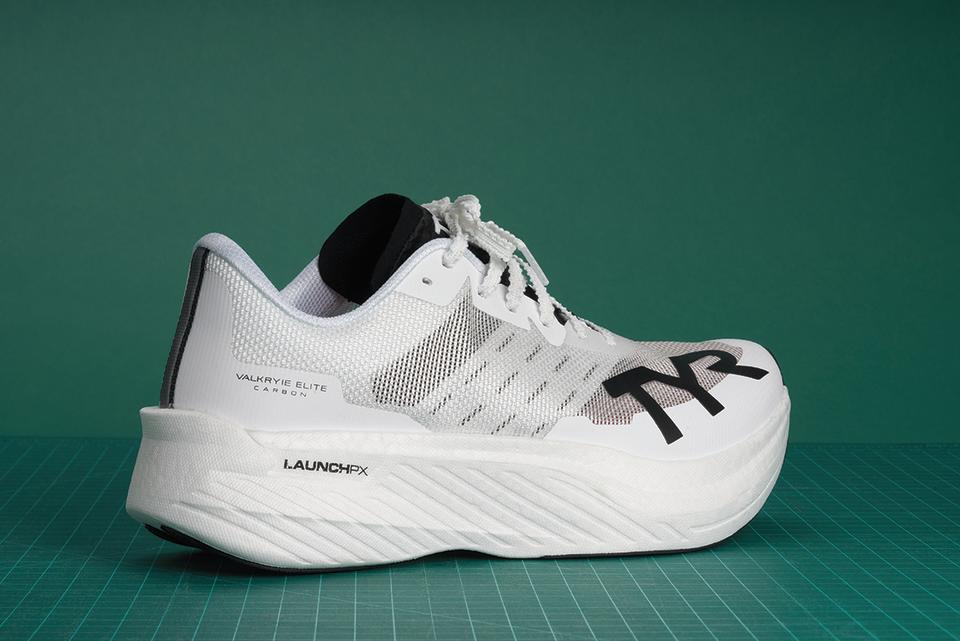
There are, however, keys to telling the story well.
“We’re most effective when we let our athletes speak for [the shoes] through their performances,” Schoolmeester said of Nike’s strategy. “What’s [also] important is how those benefits are relayed to people in ways that are exciting, not intimidating. Cushioning and energy return are critical to [helping] to break world records, but they’re universally applicable. Anybody can benefit from having energy return put back into their stride.”
Erin Cooper, Salomon North America’s senior marketing manager for run and outdoor, added that science and research can make for compelling storytelling. “The idea of speed for all resonates with runners,” she said. “This opens opportunity in terms of how we tell stories, whether that’s Maggie Montoya racing at the U.S. Olympic Trials in the S/Lab Phantasm 2 or a runner in pursuit of a sub-3:20 [personal best] at the Boston Marathon. We’re all looking to make progress.”
There are several ways brands can create awareness for their super shoes and who they are for. New Balance, for instance, has focused on showing up at community events with pairs in hand for runners to try, bringing the consumer closer to conversion. Also, the brand released a new campaign, “Run Your Way,” in March 2023, designed to show that the running community is a place for all to be seen and heard.
The root of these efforts, Fitzpatrick explained, is to ensure the super shoe message doesn’t come across as elitist.
“We’re trying to take a more inclusive approach. We’re focused on softer messaging that’s easy to understand. A lot of these shoes, when you start talking about the technical nature of them, most consumers have no idea what you’re talking about,” Fitzpatrick said. “We’re trying to reframe it so that the average consumer understands the benefits and the emotion tied to the shoes.”
Mizuno USA senior director of running Chris Brewer agreed. “We have the science, but we want to connect with runners on an emotional level,” he said. “Our marketing will pivot to sharing why they need our product without killing them with the science behind it. We want to share why our shoes are great by speaking to runners in their language.”
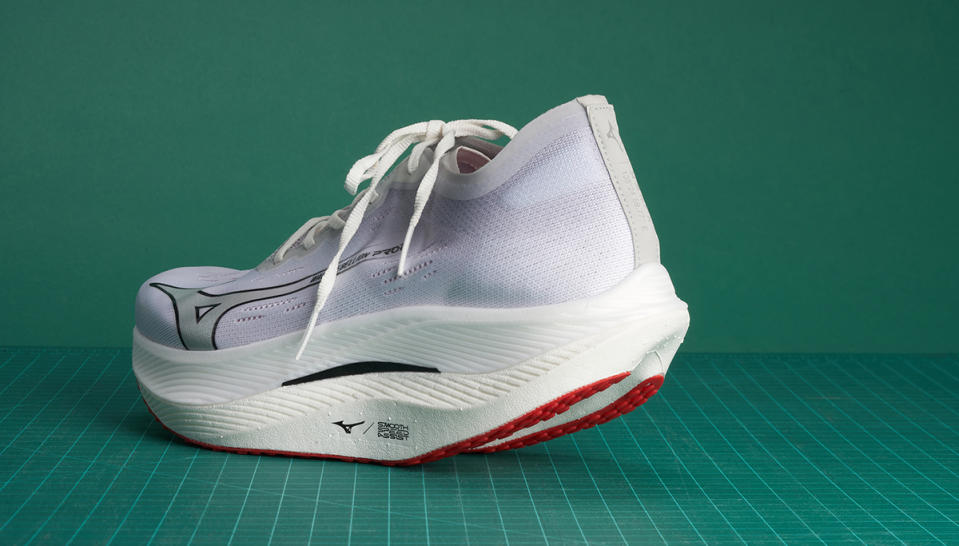
Where these super shoes are sold, for some brands, is just as critical as any marketing effort. While some are targeting channels with a broad reach, such as sporting goods retailers Dick’s Sporting Goods and Scheels, others remain focused on run specialty.
“The only place you can buy these shoes from Diadora is in a [run specialty] shop setting. We want to make sure the passion we put into our product is transferred to the athlete without losing anything in translation. This is impossible unless love for the sport is in your blood, which only happens in this environment,” said Bryan Poerner, Diadora USA president and CEO.
How Super Shoes Are Selling
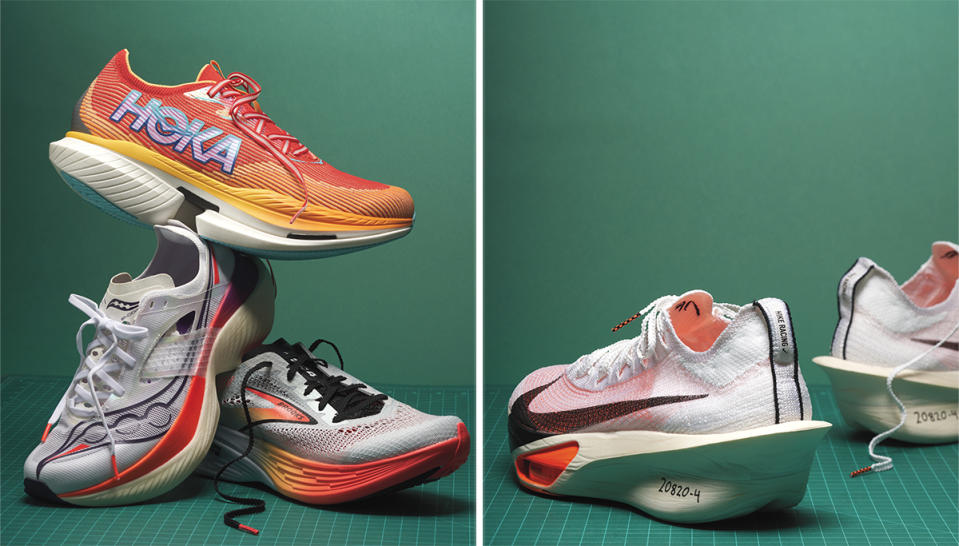
Seemingly every leading brand in the running category has their version of a super shoe, which have experienced varied success among specialty run retailers.
Scott Dvorak, owner of Charlotte Running Co. in North and South Carolina, said models from Hoka, New Balance, Brooks and Saucony have performed well for his stores.
Heartbreak Hill Running Co. co-owner Dan Fitzgerald said his stores in Boston and Chicago are also seeing strength from super shoes from New Balance and Brooks, as well as looks from Adidas, Asics and On.
However, both agreed there is one clear leader at specialty run retail when it comes to super shoes: Nike.
“When you get [Nike] Alphaflys or Vaporflys in, it’s almost like free money,” said Dvorak. The latest iterations of those franchises, the Alphafly 3 and the Vaporfly 3, retail for $285 and $270, respectively.
Fitzgerald added, “We sell them all, but Nike sells the best. Nike invented the category — I don’t think that’s a secret. The original Vaporfly 4% [from 2017] got everybody off guard and they’re on many iterations beyond the competitors — but the competitors, some caught up fast.”
The lower volume of sales for super shoes, however, means the category is still a small part of the overall business.
“We’re definitely not selling more super shoes than regular trainers,” said Dvorak. “I even venture to say that out of our shops, it’s probably one [super shoe] for every eight or nine [trainers]. It’s a vast difference.”
But a shift is happening. Fitzgerald noted that the perception four or five years ago was that super shoes would always be a niche product. He now thinks it could become a key category. “The adoption is growing exponentially with every season, so it’s becoming a much bigger [portion] of our business,” he said. “We’re going to start to see it have more predictable, steady unit sales throughout the year.”
And at Heartbreak Hill, which offers marathon training programs, in addition to products, Fitzgerald said super shoes are now an important part of his customer’s journey. “We give you the tools and expertise to train you up. Our team programming is built with that in mind. Super shoes are just another piece to give people an advantage,” he said.
As for what drives sales, there are six major marathons that take place throughout a calendar year, including Tokyo, Boston, London, Berlin, Chicago and New York City. However, brand leaders said tent-pole races aren’t necessarily major revenue contributors.
“There are moments throughout the year where spikes occur, such as the launch of an innovation, around the major marathons and any time an Asics athlete has a big performance,” said Paul Lang, senior manager of merchandising at Asics North America. “[But] as running continues to grow as a sport both regionally and globally, we are seeing super shoes being purchased year-round.”
Why Super Shoes Are Critically Important to Brands
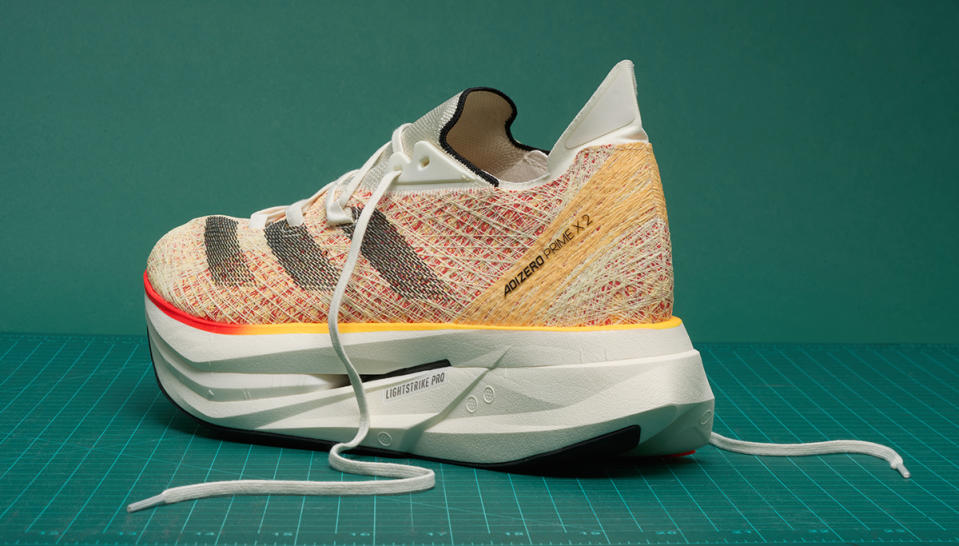
Brands see benefits for super shoes beyond the retail floor.
“A super shoe’s value isn’t its sales. We’re not going to sell 8 million of these. Its value is showing the world what we can do when this company sets our mind to performance,” Brooks’ Sackett said.
For many of today’s leading running brands, super shoes have quickly become the “hero” product in their collections, showing consumers what they’re capable of. They also serve as a vital testing ground for new innovations.
Bekah Broe, Hoka’s senior director of performance footwear, explained, “Any brand would tell you super shoes are not where you’re going to make the most [money], but it’s where you’re going to learn the most. There will always be a much more concentrated volume of sales coming from shoes that adopt the learnings from the extremes of the spectrum. For us, that’s the Mach, the Bondi, the Clifton.”
When it comes to innovation, the tech from past super shoes has already influenced a new era of running shoes.
“Nowadays, we’re using DNA Loft v3, a supercritical nitro foam, in almost all of our cushioned products. That data came from the original Hyperion [released in 2020],” Sackett said. “You’re seeing [super shoe technology] permeate every one of our products over time.”
Saucony chief product officer Brian Moore said the brand’s original super shoe tech is being used in current daily trainers. For instance, the Triumph 22, scheduled to arrive in May, will feature Pwrrun PB, the midsole featured on Saucony’s original Endorphin series from 2020.
“A foam that started off in a super shoe has now come down to the $160 core price point,” said Moore.
This transformation is underway at New Balance as well. Its FuelCell Rebel v4, a daily trainer launched March 1 and priced at $140, is directly influenced by learnings from its super shoes, according to Fitzpatrick.
“We’re constantly trying to democratize this,” he said. “It’s wild. I’ve been at New Balance for 15 years, and putting on a running shoe we were building 15 years ago versus this new Rebel, I never expected we’d get to where we are today.”
Now brands are moving quickly to evolve even more dramatically.
“The future is going to be fast, both in terms of the technology in the shoes and the speed at which they come to life,” said Jonathan Hutnyan, Under Armour’s senior product line manager of run and train footwear. “In a highly competitive and dynamic field of super shoes, brands are moving quicker than ever to innovate and deliver the next generation of racing product.”
What’s more, brands are offering multiple models of their super shoes. Adidas, for instance, has the Adizero Adios Pro 3, the Adizero Prime X 2 Strung and the Adizero Adios Pro EVO 1 — the latter releasing in extremely limited numbers in September 2023 and retailing for $500. Nike has its Alphafly and Vaporfly franchises. And Hoka’s range includes the Cielo X1 (which launched in February), as well as the Rocket X2 from March 2023 and the upcoming Skyward X, dubbed a “super trainer,” that debuts in April.
“One size does not fit all when it comes to technology,” Broe said. “You have a wide spectrum of runners who want to feel like they run fast. There is a range of biomechanics that humans have within that spectrum. Having multiple offerings allows us to build different solutions.”
The range, however, shouldn’t be too large. Puma, for instance, has intentionally limited its super shoe range to two franchises: the light and fast Deviate Elite and the propulsive Fast-R.
“It’s important to have at least two options because of the ways runners run, their body size, their foot pattern. But we don’t want to make it too complex because it’s important to stay committed to these product franchises and to keep improving them,” said Erin Longin, general manager of run and train at Puma.
About the Author
Peter Verry is the Senior News and Features Editor for Athletic and Outdoor at Footwear News. He oversees coverage of the two fast-paced and ultracompetitive markets, which includes conducting in-depth interviews with industry leaders and writing stories on sneakers and outdoor shoes. He is a lifelong sneaker addict (and shares his newest purchases via @peterverry on Instagram) and spends most of his free time on a trail. He holds an M.A. in journalism from Hofstra University and can be reached at peter.verry@footwearnews.com.
Launch Gallery: Top Super Shoes of 2024, Photos
Best of Footwear News
Sign up for FN's Newsletter. For the latest news, follow us on Facebook, Twitter, and Instagram.


